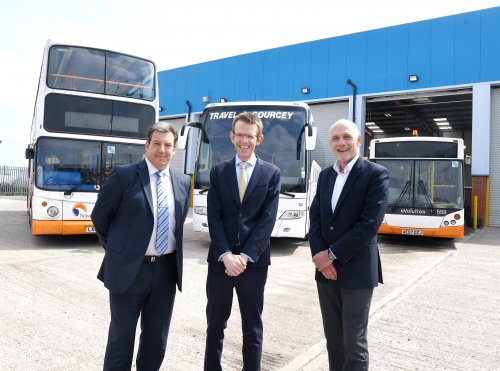Independently-owned coach and bus operator Travel de Courcey has doubled the size of its Coventry headquarters, after investing £3m in a state-of-the-art depot.
The company has created an 18,000 sq ft building which includes an engineering facility incorporating eight bays to repair its 106 vehicles, wireless vehicle platforms and LED lighting along with offices for staff, with the entire operation being powered by biomass wood chip.
The firm’s plans went ahead after receiving help from the Coventry and Warwickshire Local Enterprise Partnership (CWLEP) Growth Hub to resolve an issue over the lease at its site off Rowley Drive in Baginton, where it has been based since 1981.

CWLEP Growth Hub Commercial Manager Jeremy Moore and Planning and Development Adviser Bill Blincoe enlisted the support of Coventry MP Geoffrey Robinson and Coventry City Council Deputy Chief Executive (Place) Martin Yardley to arrange a meeting with council officers to agree a new 150-year lease.
Adrian de Courcey, Chief Executive of Travel de Courcey, said the intervention of the Growth Hub was instrumental in the business and its 300 staff staying in Coventry rather than extending its depot in Birmingham: “We had outgrown our previous building and started to look at other sites but we realised it made sense to stay where we were because it is a perfect location for the majority of our work.
“Part of the depot had a 99-year lease and the other part had a 12-year lease so it didn’t make sense to invest £3 million when we only had 12 years remaining on part of our lease.
“We previously had a 1980s-style workshop and there was more accidental damage caused in there to our vehicles than out on the roads because space was so tight.
“We can now fit in eight vehicles and we have more charging points for our electric vehicles. With the way the industry is growing, there will be no diesel vehicles soon and to survive in this industry we have to be at the forefront of electric vehicles.”
Read more news stories here: cbwmagazine.com/category/news

